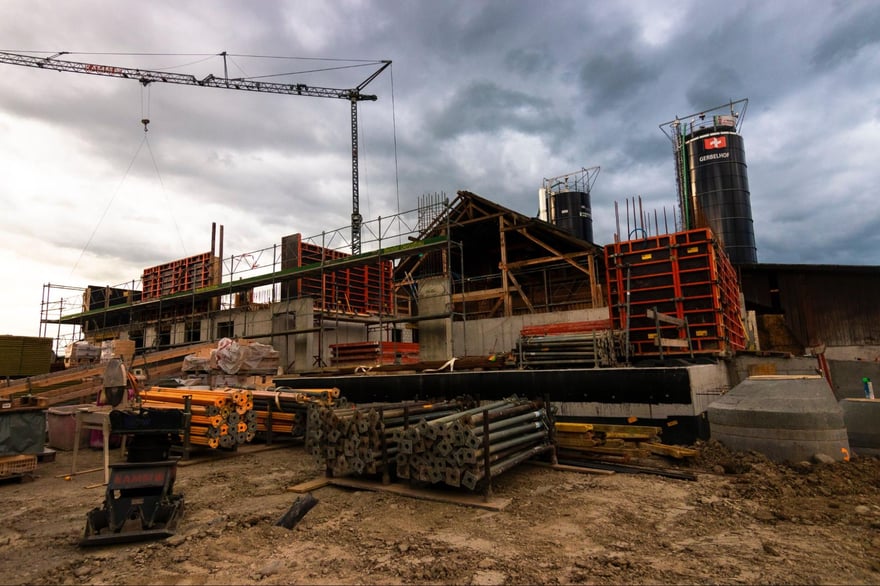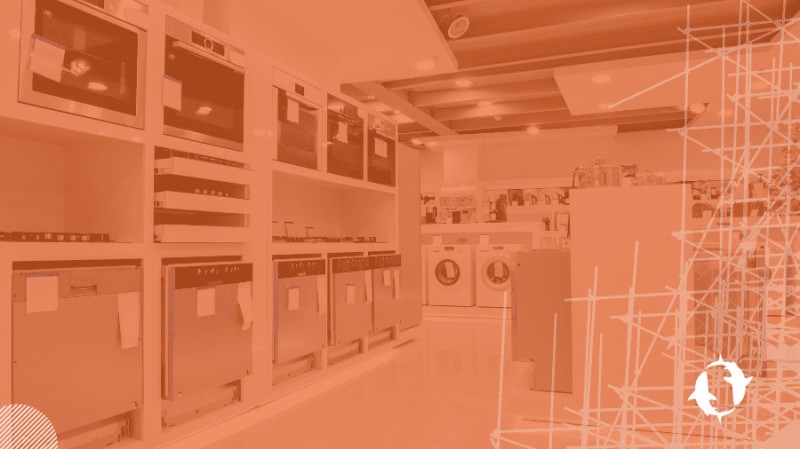An interesting facet in times of duress and instability is the innovation that society tends to create to keep the world moving. During the 2020 pandemic, while millions were at home sheltering, innovators hit the gas pedal on digital work and spurred on a massive rise in virtual events. Now, on the other side of the pandemic, virtual work and events continue to thrive for increased efficiency while maintaining – and, in many cases, improving – results.
We asked Demetri Kotiadis, managing director of Brand Hause, to unfold the power of virtual events and what this means for building materials marketing:
The popularity of virtual events may have recently increased due to necessity, but it’s clear to see they’re not just a passing fad and they really are here to stay. One of the biggest reasons why is that the pandemic has forever altered the way most people value their time. In addition, there has also been a fundamental change in what we perceive to be a meaningful experience. So how does this mindset shift affect building materials marketing?
The History of Building Materials Marketing
The building materials and construction industry is one of the oldest in existence, so it’s easy to understand why they often seem stuck in their ways with old-school mentalities that rely on outdated adages like “Bigger is better”, “If it ain’t broke, don’t fix it”, and what’s been hailed as the most dangerous phrase in business, “But we’ve always done it this way.”
However, more and more building materials marketing professionals are beginning to understand the critical role that digital marketing strategy can play in their success. Instead of focusing on general brand promotion and just “being there”, they are focusing on the quality of events they choose to both host, and attend. They are considering the role that attendees at large trade shows play in their business decisions and how many of them are actually potential customers.
Forward-thinking companies are focused on having meaningful conversations and nurturing solid relationships with existing customers, potential leads, and industry partners. Some building materials companies are now prioritizing the quality of the interactions at trade show events, including one-on-one meetings, networking opportunities, and the number of qualified leads they collect. As part of this process, they are also embracing the wealth of opportunities presented to them through the rise of virtual events.
The Rise of Virtual Events
At first, the focus of virtual events was moving in-person events online out of a need for safety. Now that we know they’re here to stay, building materials marketers must learn how to create authentic human connections and maximize their brand exposure in the virtual space. It’s time to innovate and adapt—to harness the power of sharing live experiences and making memories. After all, it really is just all about people: what they want, need, and expect is very different than it was even just a few years ago.
Technology Trends in Building Materials Marketing
Digital marketing trends are constantly evolving. Building materials companies that don’t adapt their strategies accordingly will eventually be left behind. To stay one step ahead of the rapidly changing landscape, building materials marketing and sales teams must also evolve—their strategies, their tactics, and their technologies.
Building materials companies that aren’t using every tool at their disposal to create highly personalized experiences for their customers will likely struggle to take their business to the next level. Unfortunately, many companies that aren’t comfortable with trying out the latest digital marketing trends will simply continue to focus on what’s safe and familiar.
Virtual and Hybrid vs. In-person Events
If your building materials marketing team is nervous about adopting new strategies and exploring new technology, remember that marketing strategies for virtual or hybrid events are not that different than for in-person events. You’ll ask many of the same questions. What kind of experience do you want attendees to have? What challenges does your event help them solve? How will you keep attendees connected and engaged? What are the key takeaways?
The event cycle itself hasn’t really changed. You plan, promote, create supporting materials, capture registrations, and guide people through an experience. Then you measure the event’s success and follow up with those who attended. Of course, building materials marketing professionals can’t ignore the advantages of in-person trade shows like JLC Live on the East and West Coasts. Even those, however, can be enhanced further by virtual experiences, the benefits of which are unequivocal.
The Benefits of Virtual Events
Depending on when you last attended a virtual event, you may not think of them as particularly engaging. However, this next generation of virtual experiences is no longer so limited. Virtual events have been reimagined with fully immersive 3D experiences and real-time interaction—and even real-time analytics.
Reach a Wider Audience
Thanks to their low barriers to entry, virtual events allow you to reach a wider audience. Virtual events are also vastly more scalable than in-person events, which means that building materials marketing teams are less limited in their ability to deliver unique experiences and connect to an exponentially larger audience.
Save Time and Money
In-person trade shows take a lot of time and money for attendees and exhibitors alike. Loss of productivity from time off work, time spent away from family, time spent traveling to and from the show, and money spent on transportation, lodging, and food. Plus, exhibitors have the added time and cost of setting up and breaking down physical booths, as well as the logistics of getting promotional giveaways and marketing materials to and from the show.
Not only can you save a significant amount of time, but by removing some of the overhead costs, companies can reduce their building materials marketing budget or reallocate money to things like improved virtual event technology, promotional marketing, or high-profile speakers or entertainment.
Added Flexibility
Virtual events provide added flexibility, and will make the event more inclusive and accessible to a broader range of attendees. Some people, for example, might have an inability to travel even though they are existing high-level customers or potential buyers. Others simply don’t have the time it takes to attend a typical trade show.
However, a virtual event can more easily fit into someone’s schedule, and because virtual events don’t require as much time for all of the things involved in attending an actual physical location, you can shorten the entire event or use that time to host a variety of targeted sessions to help grow participation in your event.
Another benefit that building materials marketing professionals will appreciate is that virtual events can offer more exposure for your brand. This is because most companies would typically send only a select few to an in-person trade show. Virtual events, on the other hand, allow entire teams to get involved to learn about your building materials products. Finally, virtual events would rarely, if ever, be impacted by weather or travel conditions.
Improved Networking Opportunities
Contrary to what you might think, when compared to in-person events, virtual experiences offer precious networking opportunities. Imagine a crowded convention center. Now think of a more intimate setting. Even though they may be bringing together hundreds of people from across the world, virtual environments can be easily controlled by separating attendees into smaller user groups. This is one very effective way to build community and helps ensure people don’t end up feeling lost or disconnected.
In fact, with the ability to chat and interact face-to-face over webcam in real-time, virtual event attendees have stated they feel even more connected than at live events because they found it so easy to share the experience with others.
Live and On-demand Availability
Once an in-person event has ended, everyone packs up and goes home. Booths are dismantled, and promotional materials are put back on shelves. When a virtual event is over, every bit of content created by your building materials marketing team remains readily available for use. Anyone who wasn’t able to attend your live event can still experience a recorded or self-led version at a more convenient time, and registered attendees can be given access to personalized event content for an even more relevant experience.
Easier to Measure Event Success
By their very nature, the success of virtual events is much easier to measure than an in-person event. Detailed reports that analyze user behavior and track which content they interacted with and what live-stream they engaged with most can be particularly helpful in gauging the success of product launches. This kind of information is also very useful in lead follow-up communications.
Environmentally-Friendly
Looking for ways to reduce your carbon footprint and cut down on your waste? Virtual events use less energy, create fewer fuel emissions from transportation, and reduce paper waste.
Addressing the Challenges of Virtual Events
As you can see, there are many benefits to hosting a virtual event, but that doesn’t mean they come without any challenges. Building materials marketing teams will likely need to get more creative when thinking of ways to engage and delight attendees. Here are just a few ways to get the most from your virtual event:
Pre-event Engagement
Once an attendee has registered for your virtual event, you can begin to engage with them. Small group pre-event get-togethers can be arranged for registrants to attend. By creating a gathering space for people with similar interests, you can help foster more meaningful connections with very little coordination or management by your marketing team.
Sending attendees welcome kits filled with swag is another excellent way to stir up interest and excitement, create a sense of community, and get people invested in your event. Welcome kits can also include links to digital information like the event agenda, videos, or other marketing materials they may find helpful.
Incorporate Special Features During Your Event
Virtual events provide a multitude of unique ways to surprise and delight people when they first arrive. Virtual welcome hubs and waiting rooms can help give participants a head start on networking. Participants can be given the option to set up personalized avatars, visit chat lounges, and interact with other attendees before the main event begins.
Another great way to welcome participants is with a virtual swag shop where they can choose from a variety of items like customized NFT digital business cards, branded promotional products, themed gift baskets, or curated products from event sponsors.
During your event, you can host Q&A sessions, interactive workshops, or breakout sessions. Polls can offer valuable insight into your attendees’ experiences and help your building materials marketing team improve your next virtual event.
Post-event Follow-up
Measuring the success of your virtual event, gathering feedback, and following up on leads is one of the most critical parts of your building materials marketing strategy. It gives you another opportunity to communicate with your audience and potential prospects, provides you with valuable insights into your customers’ needs and wants, and helps build on the excitement you worked so hard to create.
Thankfully, virtual events make it easy to gather real-time data and audience feedback. With the wealth of content created from your virtual event, you’ll have no shortage of relevant and helpful information to share in follow-up emails as well as on social media.
To keep the momentum going, you can even schedule follow-up events like invitation-only virtual roundtables. Whatever you choose to do, the important thing is to make a plan and stick to it.
Integrating Virtual Events Into Your Building Materials Marketing Strategy
Virtual events are here to stay. But, of course, so are in-person gatherings. The question isn’t whether or not to shift from physical to virtual events. The challenge for building materials marketing professionals lies in finding the best way to embrace both in order to get the most ROI from any event they host or attend—whether that’s a virtual product launch, a hybrid trade show, an AR product training, or an in-person conference.
How has your marketing team acknowledged the changing landscape of building materials marketing? Are you embracing virtual events as a part of your long-term strategy? If you’re a building materials company struggling to navigate the complexity of adapting to virtual events or the new hybrid approaches to physical shows, consider working with an experienced trade show marketing and event-planning specialist to help guide you through all aspects of your event—from strategy, planning, and promotion to production, execution, and post-event follow-up.
Brand Hause is a building materials marketing agency that can help you deliver innovative and meaningful experiences to stay ahead of the industry curve and position your business for further growth. Brand Hause is a full-service digital marketing agency based in Toronto, Canada. With over 20 years of experience in the building materials industry, they provide branding, marketing strategy, and website design services focused on accelerating growth, success, and long-term profitability.




